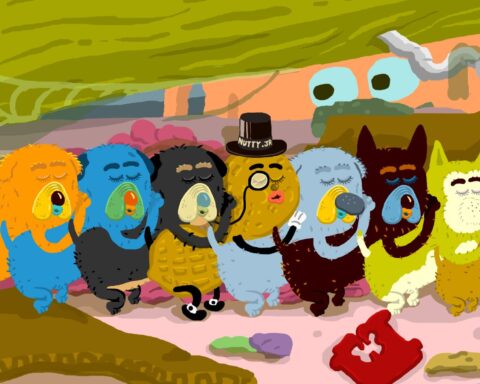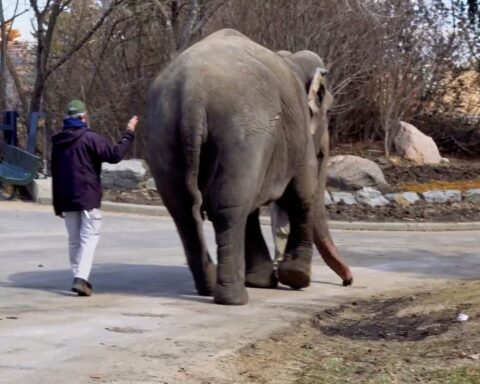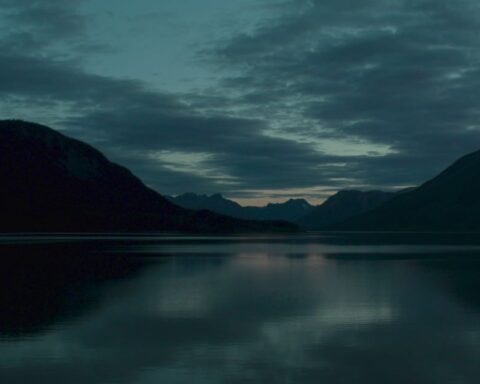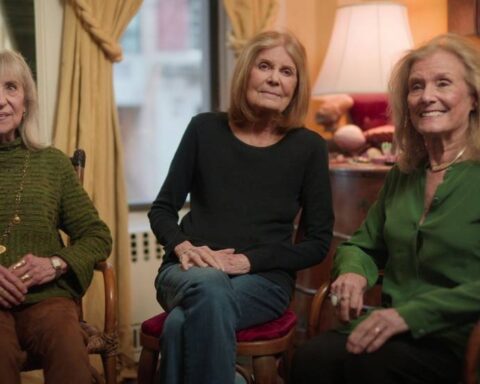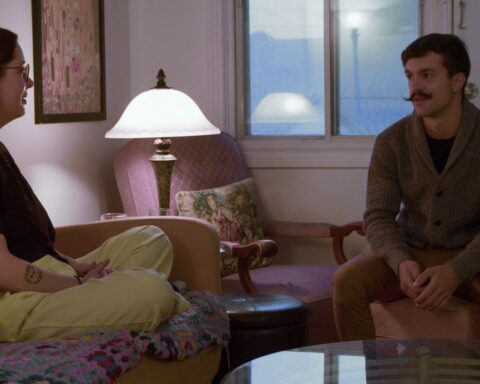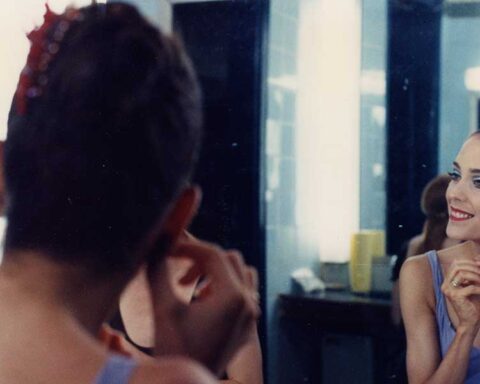The 22nd annual Montreal International Documentary Festival (RIDM) included two feature films that were framed as following the lives of street dogs, but ultimately gave way to human stories.
The Austrian/German Space Dogs , directed by Elsa Kremser and Levin Peter, sees the lives of street dogs in Moscow in the shadows of Laika, the first dog that the Russians sent into orbit and who tragically perished. The film reiterates that Moscow street dogs were specifically chosen for journeys to space because of their inherent toughness. This is especially emphasized in a long, drawn-out scene where the dogs torment and violently kill a cat, included in its brutal entirety to make the viewer uncomfortable. The real treasure in Space Dogs was the archival footage of the dogs sent to space post-Laika. These Frankenstein-style street dogs, many of whom didn’t return from orbit alive, were the real stars of the show. The metaphor that compared them to the street dogs the film follows for most of its runtime was interesting at first, but it became a bit boring to follow the street dogs at length with only this as the purpose. An appearance of a chimpanzee as another metaphorical descendant (to the first chimp in orbit) was a fun aside.
The dogs in the Chilean/German co-production Los Reyes, directed by Bettina Perut and Ivan Osnovikoff, are the guardians of the local skatepark in Santiago, Chile. The dogs in this film somehow feel more like characters—likely because we learn their names, whereas the dogs in Space Dogs remain anonymous. Chola and Football are an odd couple that perform their own instinctual wildness and playfulness well in the film. Chola has a ball that she likes to tip over the edge of the skatepark’s bowl for the skaters to fetch, and loves it so much that at one point she falls asleep with the ball snugly in her drooling jowls. The dogs’ ability to peacefully loiter in the skatepark without ever being shooed off implies their identities as fixtures of the park. At one point, what appear to be doghouses are put in the park for them. Although the visuals focus on the two dogs, the film’s narrative and background noise comes from the conversations of skaters, captured at length and in crystal-clear detail. We learn just as much about the humans that cohabitate the park, if not more. Thanks to the funny and vulgar quips from the skaters, paired with visually captivating macro-closeups of the animals, Los Reyes is a thoroughly enjoyable look at the many different kinds of lives that overlap in a place
Overall, the dreamy and poetic dogscapes at RIDM served as innovative approaches to what turned out to be largely human stories. Space Dogs gives a taste of life in Moscow and the nature of the street dog while revealing some very impressive archival footage, but the philosophical narrative could come across as too pretentious for some. Los Reyes is a strikingly similar film in concept, but plays the dogs as secondary visual characters and often comedic relief to the struggles and gripes of the struggling humans surrounding them. While the films had their differences and similarities alike, they were both highly digestible worlds to sink into for a little while as slight breaks from the human ones. And of course, it helps if you like dogs.




